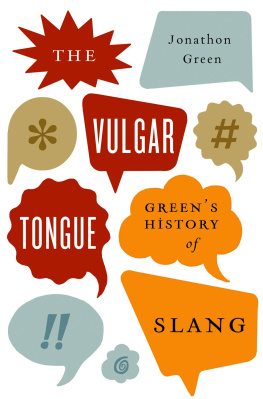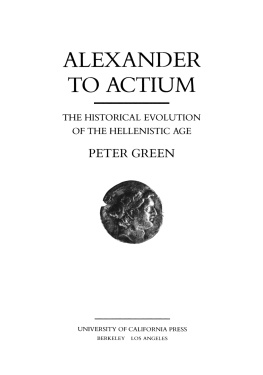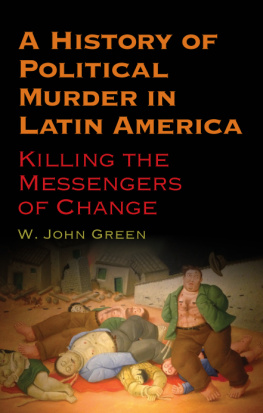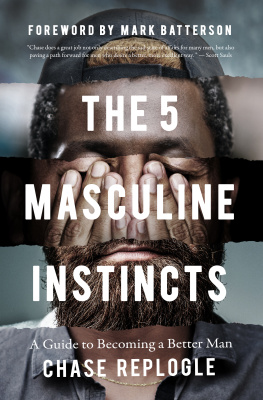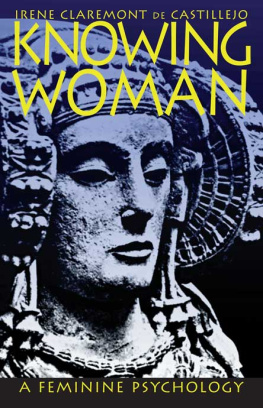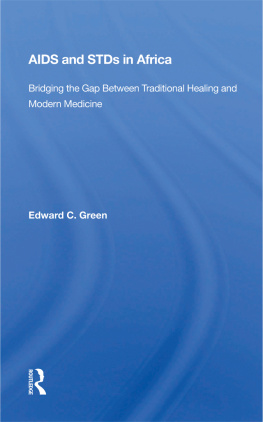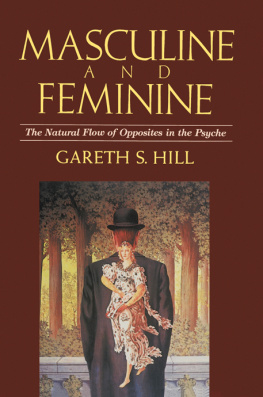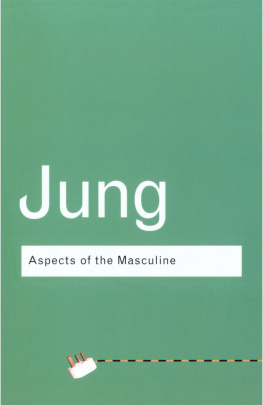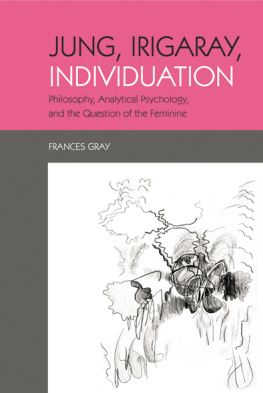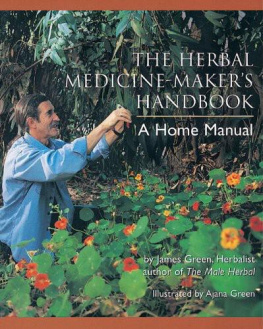Green - Making Womens Medicine Masculine
Here you can read online Green - Making Womens Medicine Masculine full text of the book (entire story) in english for free. Download pdf and epub, get meaning, cover and reviews about this ebook. year: 2008, publisher: Oxford University Press, genre: Romance novel. Description of the work, (preface) as well as reviews are available. Best literature library LitArk.com created for fans of good reading and offers a wide selection of genres:
Romance novel
Science fiction
Adventure
Detective
Science
History
Home and family
Prose
Art
Politics
Computer
Non-fiction
Religion
Business
Children
Humor
Choose a favorite category and find really read worthwhile books. Enjoy immersion in the world of imagination, feel the emotions of the characters or learn something new for yourself, make an fascinating discovery.

- Book:Making Womens Medicine Masculine
- Author:
- Publisher:Oxford University Press
- Genre:
- Year:2008
- Rating:4 / 5
- Favourites:Add to favourites
- Your mark:
- 80
- 1
- 2
- 3
- 4
- 5
Making Womens Medicine Masculine: summary, description and annotation
We offer to read an annotation, description, summary or preface (depends on what the author of the book "Making Womens Medicine Masculine" wrote himself). If you haven't found the necessary information about the book — write in the comments, we will try to find it.
Green: author's other books
Who wrote Making Womens Medicine Masculine? Find out the surname, the name of the author of the book and a list of all author's works by series.
Making Womens Medicine Masculine — read online for free the complete book (whole text) full work
Below is the text of the book, divided by pages. System saving the place of the last page read, allows you to conveniently read the book "Making Womens Medicine Masculine" online for free, without having to search again every time where you left off. Put a bookmark, and you can go to the page where you finished reading at any time.
Font size:
Interval:
Bookmark:
MAKING WOMENS MEDICINE MASCULINE
The Rise of Male Authority in Pre-Modern
Gynaecology
MONICA H. GREEN


Great Clarendon Street, Oxford OX2 6DP
Oxford University Press is a department of the University of Oxford.
It furthers the Universitys objective of excellence in research, scholarship,
and education by publishing worldwide in
Oxford New York
Auckland Cape Town Dar es Salaam Hong Kong Karachi
Kuala Lumpur Madrid Melbourne Mexico City Nairobi
New Delhi Shanghai Taipei Toronto
With offices in
Argentina Austria Brazil Chile Czech Republic France Greece
Guatemala Hungary Italy Japan Poland Portugal Singapore
South Korea Switzerland Thailand Turkey Ukraine Vietnam
Oxford is a registered trade mark of Oxford University Press
in the UK and in certain other countries
Published in the United States
by Oxford University Press Inc., New York
Monica H. Green 2008
The moral rights of the author have been asserted
Database right Oxford University Press (maker)
First published 2008
All rights reserved. No part of this publication may be reproduced,
stored in a retrieval system, or transmitted, in any form or by any means,
without the prior permission in writing of Oxford University Press,
or as expressly permitted by law, or under terms agreed with the appropriate
reprographics rights organization. Enquiries concerning reproduction
outside the scope of the above should be sent to the Rights Department,
Oxford University Press, at the address above
You must not circulate this book in any other binding or cover
and you must impose the same condition on any acquirer
British Library Cataloguing in Publication Data
Data available
Library of Congress Cataloging in Publication Data
Data available
Typeset by Laserwords Private Ltd, Chennai, India
Printed in Great Britain
on acid-free paper by
Biddles Ltd, Kings Lynn, Norfolk
ISBN 9780199211494
1 3 5 7 9 10 8 6 4 2
In 1449, an Italian humanist named Francisco Filelfo wrote excitedly to Filippo Pelliccione, a physician in Milan, asking him, indeed begging him, to be allowed to borrow a very ancient book in Pellicciones possession. According to Filelfos letter, the book contained the medical writings of Celsus, Soranus, Apuleius, and even certain women. For both these Renaissance seekers of antiquities, female authorities on womens medicine were an intriguing curiosity. As antiquities, however, they were also a thing of the past.
At exactly the same time the non-physicians Filelfo and Leland were engaging in their antiquarian quests, the field of gynaecology was exploding into a fully fledged subdiscipline of medicine. By the end of the sixteenth century, it would be represented not only by dozens of newly published books, including a massive 1097-page oversized compendium, The Books of Gynaecology of 1597 (by then in its third edition), but by university lectures, a published list of authorities in the field, and even its own insider controversies. Although there is no evidence that any sixteenth-century physicians or surgeons confined their practice to womens diseases or took on specialist identities as gynaecologists, gynaecology had reclaimed from the ancients both its name (gynaikeia, from the Greek for womens matters) and its rationale for why it should exist as a specialized field. But now, unlike Antiquity, there was no longer any association between the branch of medicine that topically addressed women and female Neither Schenck nor any sixteenth-century gynaecological writer would acknowledge a medieval or modern woman as his peer.
This sixteenth-century transformation of gynaecology is the end of my story, not its beginning. For I shall argue in this book that the traditions of medical knowledge and practice represented by The Books of Gynaecologya collection of twenty-eight treatises, all of which, with but one exception, were composed (or allegedly composed) by male authorswere in fact a long time in formation. The sixteenth-century gynaecological writers effected a nearly total evisceration of their field, rejecting or simply ignoring the opinions and teachings of medical writers from the previous half millennium. But even if they could not admit it, they had inherited from them something more important: they had inherited the social structures as well as the intellectual traditions that allowed men to be authorities in the field of womens medicine. Gynaecology as a specialist field of medical knowledge had indeed been born, but it was a masculine birtha birth without female involvement, either as maternal principle or assisting midwife.
This transformation in the shifting authorities of women vs. men in the field of womens medicine is all the more remarkable in that what had served as the leading text throughout most of Europe from the late twelfth well into the fourteenth century (and in certain areas, into the sixteenth) was credited to a female author, Trotula of Salerno. Modern researches have shown that Trotula was originally the title of a compendium on womens medicine, not its author, though significant parts of the work do indeed derive from a historic twelfth-century female author, Trota (or Trocta) of Salerno. The other parts of the work were male-authored, yet Trotas existence and that of other female practitioners in Salerno made the metamorphosis from the title Trotula to the authoress Trotula believable. At least through the fourteenth century many male intellectuals assumed it to be natural that knowledge on womens bodies should
Yet both Trota and the author-figure Trotula were anomalies. As this book will show, neither in twelfth-century Salerno nor at any point thereafter did male practitioners, as a group, not engage in gynaecological care at some level. Certain individual male practitioners, to be sure, may have refused to treat female patients, either out of a sense of ignorance of womens bodies or a belief that intimate contact with a woman would somehow negatively affect them. And many female practitioners existed who took up that slack; at least one even publicly challenged men to keep out of womens affairs. But there is far too much evidencetextual, iconographic, and anecdotalto argue that men were completely uninvolved with womens healthcare, including conditions of the reproductive organs. This same evidence also shows that women, however much they continued to attend to the medical concerns of themselves or other women, did not have anything like a monopoly over the production of knowledge on or care of the female body. In fact, as this book will demonstrate, male involvement with womens medicine, both medical (control of diet and use of drugs to affect internal conditions) and surgical (the treatment of disorders on or near the surface of the body), increased substantially between the twelfth and sixteenth centuries. Far from being a modern transformation, the masculinization of womens medicine is instead a fundamental feature of western medicine down to its medieval roots.
These are large claims and, to understand them, a crucial distinction must be made, for on this hangs my story. Although obstetrics and gynaecology are not everywhere as tightly linked as they now are in the contemporary United States (and even here they are being uncoupled due to concerns over obstetrical malpractice insurance), modern western medicine has tended to keep them closely associated so that for most observers obstetrics and gynaecology (OB/GYN) are inherently one. And that they are, in so far as both fields necessarily take the organs and physiological functions unique to the female body as their particular concern. This ontological linking of OB/GYN was true of ancient Greek and Roman cultures, and may have been true of other historical societies as well. Yet a linkage of obstetrics and gynaecology based on shared anatomical focus need not necessarily dictate that they remained linked in the intellectual frameworks of learned medicine, nor that the social structures of medicine necessarily assigned practice in the two fields to a single group of healers. I will argue here that the gendering of gynaecology took a different path than that of obstetrics, with the result that by the end of the Middle Ages, the two fields were in practice distinct: while care of uncomplicated births remained in the hands of women, gynaecological care (as well as certain aspects of emergency obstetrical care) had passed into the hands of men.
Next pageFont size:
Interval:
Bookmark:
Similar books «Making Womens Medicine Masculine»
Look at similar books to Making Womens Medicine Masculine. We have selected literature similar in name and meaning in the hope of providing readers with more options to find new, interesting, not yet read works.
Discussion, reviews of the book Making Womens Medicine Masculine and just readers' own opinions. Leave your comments, write what you think about the work, its meaning or the main characters. Specify what exactly you liked and what you didn't like, and why you think so.


